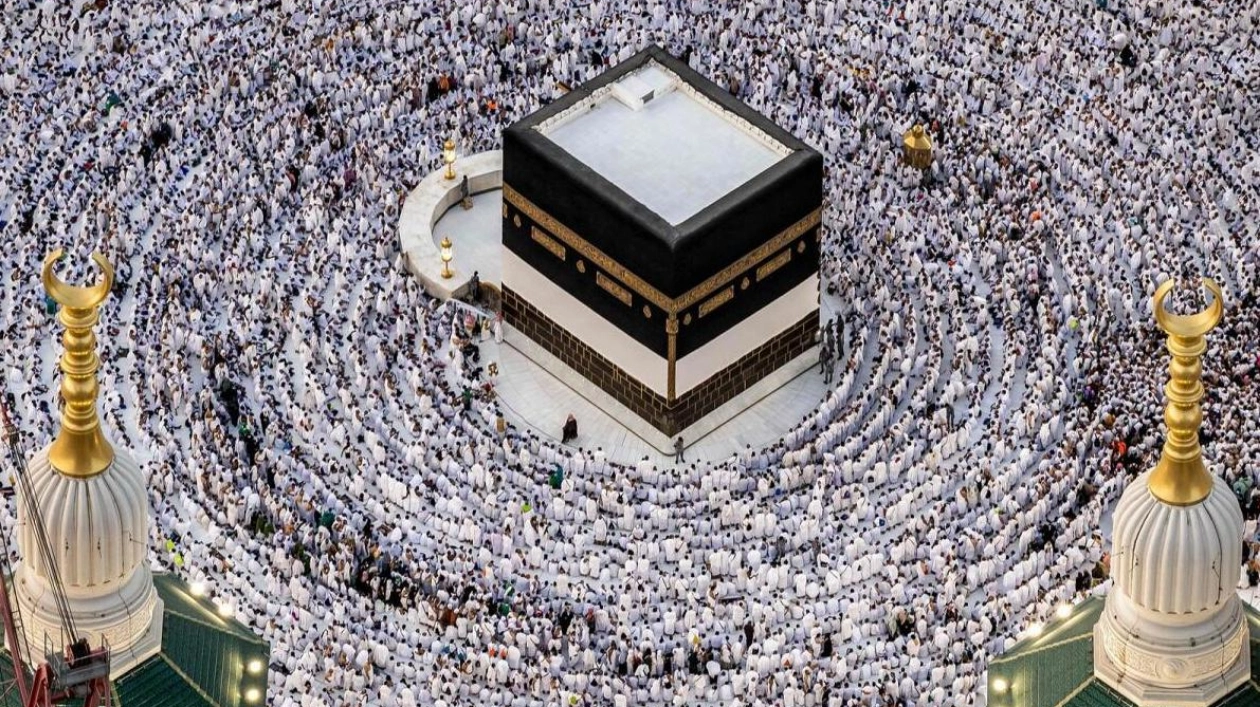The yearly Haj pilgrimage, recognized as one of the five fundamental pillars of Islam, commences on Friday, with an anticipated participation of over one million Muslims globally. Last year, the event attracted more than 1.8 million devotees, as reported by official statistics, following the removal of pandemic-related constraints and age restrictions. It is a religious obligation for all Muslims to undertake the Haj to the sacred city—from which non-Muslims are rigorously prohibited—at least once in their lifetime if they are financially capable. During this time, adherents gather in the holy city to engage in a series of rituals that mirror the final pilgrimage of the revered Prophet Muhammad (peace be upon him). Here's an overview of the ceremonies that typically constitute one of the world's largest religious congregations:
Participants must initially enter a state of purity known as ihram, which mandates specific attire and conduct. Men don a simple, seamless white garment that underscores unity among worshippers, irrespective of their social standing or nationality. Women are required to wear loose, white dresses that reveal only their faces and hands. During this period, pilgrims are forbidden from engaging in disputes, intimate relations, or applying perfume. They must also abstain from trimming nails, hair, or beards. The initial rite involves circumambulating the sacred Kaaba, a large black cubic structure situated at the heart of Makkah's Grand Mosque, seven times. Constructed from granite and draped in a richly embroidered cloth inscribed with verses from the Holy Quran, the Kaaba stands nearly 15 meters (50 feet) tall. Muslims worldwide face the Kaaba during prayer, believing it to have been first constructed by Adam, the first human, and later reconstructed, including by Abraham approximately 4,000 years ago. Following this, pilgrims traverse between the hills of Safa and Marwa seven times. They then proceed to Mina, located about five kilometers (three miles) away, in preparation for the pilgrimage's main event at Mount Arafat. The pinnacle of the Haj is the assembly at Mount Arafat, roughly 10 kilometers from Mina, where the Prophet Muhammad (peace be upon him) delivered his last sermon. Pilgrims congregate on the 70-meter high hill and its adjacent plain for hours of prayer and recitation of the Holy Quran, remaining there until dusk. Post-sunset, they travel to Muzdalifah, situated midway between Arafat and Mina, where they collect numerous pebbles for the symbolic 'stoning of the devil'. The final significant ritual of the Haj occurs back in Mina, where pilgrims cast seven stones at each of three concrete walls symbolizing Satan. This act replicates Abraham's stoning of the devil at the three locations where it is believed Satan attempted to deter him from obeying God's command to sacrifice his son, Ishmael. Following the initial stoning, the Eid Al Adha feast of sacrifice commences. Sheep are slaughtered, mirroring the lamb that God substituted for Ishmael in a global simultaneous ceremony. Men then either shave their heads or trim their hair, while women snip a fingertip-length section of their hair. Pilgrims are then permitted to revert to their regular attire, returning to circumambulate the Holy Kaaba and complete their stone-throwing rituals before departing. The Haj marks the final pillar of Islam, with the other four being: profession of faith, daily prayers, charitable giving, and fasting from dawn to dusk during the holy month of Ramadan.






